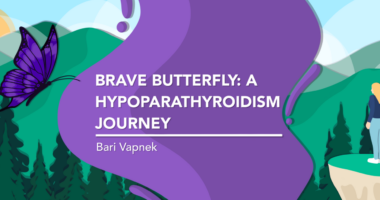Getting to the bottom of a surprise medical bill took years
I've spent countless hours jumping through hoops and red tape

I’m currently staring at a $1,400 past-due bill on my desk, the cost of a decision made. In the grand scheme of my medical bills, $1,400 isn’t unusual. It’s the same price as 12 physical therapy visits once I exceed my insurance maximum, or the cost of seven eye movement desensitization and reprocessing therapy sessions.
What was unusual was that, for two years, no one could explain to me why I’d received the bill.
Each agent told me the same thing: “This should be covered based on your plan. It’s a coding issue.” When I asked if they could tell me what the codes needed to be to get the services covered, they told me they weren’t able to provide that information but they could rebill the services. After five years with my current insurance, I was used to spending hours on the phone trying to peel back the layers of red tape, debating medical billing codes, and reading between the lines of what the agent was attempting to say, but this had me stumped.
With each rebill — which took 30 days — the bill amount changed. There’d be $20 dropped off here and another $15 a month later. Then, without warning, my bill tripled. Finally, this week, after dozens of calls and hours on the phone, I got an answer: This was the cost of the lab work required when I joined the Yorvipath (palopegteriparatide) expanded access program (EAP) in 2023.
The costs associated with EAPs
The EAP was an extension of the Phase 3 clinical trial, but had looser guidelines. Clinical trials require patients to frequently check in at specific medical sites and do testings at certain times for accurate data collection. Patients also run the risk of receiving a placebo. For a hypoparathyroidism clinical trial, patients must go through a washout period where only conventional therapy — oral Rocaltrol (calcitriol) and calcium supplements — is allowed 90 days prior to joining. In turn, the pharmaceutical company covers all travel, testing, and medication expenses on the patient’s behalf.
For me, a clinical trial wasn’t feasible because of the washout period. In 2019, I was one of the estimated 400 patients granted access to the Natpara special use program (SUP), a one-of-a-kind program that allowed high-risk patients to stay on the recalled medication as long as they followed a specific dosing protocol. Despite struggling on the Natpara SUP — my calcium unstable and symptoms flaring — going off the medication was significantly riskier for me. A washout period wasn’t an option, but neither was staying on SUP.
When Ascendis announced the Yorvipath EAP at the end of 2022, I jumped at the chance! My doctor went through a monthslong application process and training for his office to become an EAP prescribing site. On June 7, 2023, I became the first patient to transition directly from the Natpara SUP to the Yorvipath EAP without a washout period.
In order to comply with the EAP, I was required to get weekly labs — sometimes more frequent — to check my calcium and other relevant blood levels for the first several months. This led to 17 blood panels (with multiple tests each) between June and December of 2023 alone. I’ll admit, I didn’t keep track of how many tests I was doing compared with my insurance coverage limit. My focus was on how I was feeling and reclaiming the life I’d lost, instead of counting every visit and comparing it against a nearly indecipherable chart about what would and wouldn’t be covered.
Once my doctor’s office and insurance narrowed down that the $1,400 was for my frequent testing during the EAP, I reached out to Ascendis. I knew this cost was likely going to be out-of-pocket, but I wanted to double-check. When the nurse answered, I explained the situation and asked if Ascendis provided any kind of stipend for EAP patients in regards to lab work. She was stumped, and said she wasn’t even sure how to find the answer to that question.
While clinical trial costs are covered by pharmaceutical companies, costs associated with EAPs can be passed on to the patient. I’m sure this information was on the electronic paperwork I signed to start the EAP, but my email copy wouldn’t load, and I was unable to get a duplicate from either Ascendis or my specialist’s office by the time I wrote this column.
In the end, getting my life back is totally worth $1,400, and I’m lucky enough to be able to afford to pay the bill. I just wish getting the answers about why I received it didn’t take me two years and many hours of jumping through hoops and red tape.
Note: Hypoparathyroidism News is strictly a news and information website about the disease. It does not provide medical advice, diagnosis, or treatment. This content is not intended to be a substitute for professional medical advice, diagnosis, or treatment. Always seek the advice of your physician or another qualified health provider with any questions you may have regarding a medical condition. Never disregard professional medical advice or delay in seeking it because of something you have read on this website. The opinions expressed in this column are not those of Hypoparathyroidism News or its parent company, Bionews, and are intended to spark discussion about issues pertaining to hypoparathyroidism.








Leave a comment
Fill in the required fields to post. Your email address will not be published.